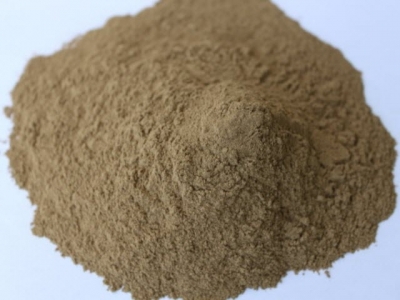Licorice feed additive boosts fish growth, immune response

Adding licorice to farmed fish feed may improve immune response and boost growth performance.
An international team of researchers examined the use of glycyrrhiza glabra or licorice and astragalus membranaceus (AM) as additives in the diets of farmed perch. The group reported their findings in the journal Fish & Shellfish Immunology.
“The purpose of the present study was to evaluate the effects of dietary supplementation of G. glabra and a mixture of G. glabra -AM on the immune response and growth performance of yellow perch in response to starvation stress exposure,” said the researchers.
The combined feed additives licorice and AM generated improvement across immune functioning, biochemical reactions and growth performance, reported the authors.
“Feeding AM and licorice diets significantly increased growth performance, antioxidant and immune response profiles throughout the entire experiment, suggesting their beneficial rule as natural anti-stress agents,” they said.
Immune response
Licorice has been associated with immunomodulatory, hepato-protective and anti-oxidative abilities, said the researchers. It also has been linked with growth-promoting effects in fish.
AM has been used in herbal remedies and contains many components including astragalus polysaccharides (APS), organic acids, alkaloids, glucosides, and volatile oils, they said.
However, no research appears to have been done examining the effect of the plant extracts on expression of immune related genes or growth genes in fish, they said.
The study
In the experiment, a group of 450 perch were given one of five diets for a four-week period. The diets included an additive-free basal diet, the diet with 1, 2 or 3g/kg licorice and a diet with 10g/kg licorice: 10g/kg AM feed to make it a concentration of 1%/kg.
The basal diet was a commercial product produced by PMI Nutritional International and the G. glabra and AM also were commercial products from Oregon’s Wild Harvest, they said.
In a second phase of the experiment, fish receiving the four experimental diets had their food withheld for a week for a stress exercise, said the researchers.
Before and after the starvation stressor, a sample of fish was harvested for blood and tissue, they said.
Blood was checked for glucose, cortisol, alanine transaminase (ALT) and lysozyme activities, they said. Superoxide dismutase (SOD), glutathione peroxidase (GPx) and catalase (CAT) levels were also checked and liver samples were collected to examine aspartate aminotransferase (AST), SOD, GPx, ALT and lipid peroxidase (LPx).
Fish also were weighed at the start, end of phase I and end of starvation period, said the researchers. Body mass gain (BMG), specific growth rate (SGR), condition factor (CF), length gain rate, and the feed conversion ratio (FCR) were calculated.
Results
The results demonstrated that including both the AM and licorice additives into the fish feed improved several responses - growth performance indicators that saw improvement from the treatments included BMG, SGR, length, CF and feed conversion ratio (FCR), noted the team.
“The highest significant increase was for group fed with 1% (w/w) (Licorice-AM mixture) followed by those fed with 3, 2, and 1% (w/w) licorice diets, respectively after four weeks feeding on experimental diets at pre-exposure and post-exposure to 1-week starvation stress,” said the researchers.
On the immune side, SOD, GPx, CAT, LPx and lysosome activities were improved, they said. AST and ALT activities along with glucose and cortisol levels also had positive reactions.
“Licorice supplementation showed the most significant increase in lysozyme activity for 2% (w/w) G. glabra group before exposure to any stress and for the 1% (w/w) G. glabra treated groups after exposure to one week starvation stress (P < 0.05) compared to the control,” said researchers. SOD activity was increased for fish getting higher levels of licorice, but it was highest for fish getting both supplements after a starvation period.
Fish getting the lowest supplement level had the largest increase in GPx in both liver and erythrocyte lysate prior to the starvation stressor, they said. For CAT activity, the low level licorice supplement had the best response after the stressor and middle level the best before the starvation period.
Similarly, both low and middle level supplemented diets produced the best response in LPx activity before the stress episode, they said.
The middle supplement level had the best reaction in glucose and cortisol levels and ALT responded best to combined supplements, said the researchers. “The most significant decrease in AST activity was for groups receiving 3%/kg G. glabra diet given at pre-exposure and for the 1%/kg G. glabra group post-exposure to 1-week starvation stress,” they added.
The mixed diet produced the highest increase in alpha 2 macroglobulin (A2M), serum amyloid A and complement component C3 gene expression before, they said. After the starvation period it produced the best reaction in A2M, SOD and GPx, they said.
Có thể bạn quan tâm
 Do pineapple trimmings have a place in aquafeed?
Do pineapple trimmings have a place in aquafeed? A feed product made using pineapple peelings may boost growth, health and production of farmed prawns.
 Does enzyme use ensure higher gain in tilapia production?
Does enzyme use ensure higher gain in tilapia production? Adding phytase to plant-derived tilapia diets may boost nutritional gain and offer improved growth performance and intestinal health.
 Supplemental selenium boosts plant-based aquafeed
Supplemental selenium boosts plant-based aquafeed Adding selenium to plant-based fishmeal may improve growth, performance of farmed seabass. Supplemental selenium boosts plant-based aquafeed